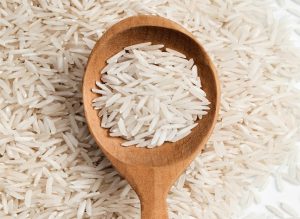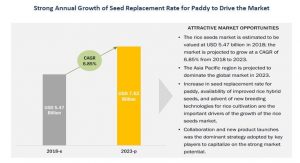
Starting a Rice Mill in India
Rice is attained from paddy. Although paddy cannot be eaten directly as the husk and bran on it are known to be indigestible. Hence, paddy must undergo processing to harvest rice grains that are suitable for cooking and eating. Rice grains have 20% husk, 8-12% bran, and 68-72% milled rice or white rice. The composition depends on the type of rice variety.
Related Projects: - Rice and Rice Based Products, Value Added Products of Broken Rice
The Process of Rice Milling Business
Rice milling contains the process of removal of husk, bran, and then polishing. The husk is generally sold in the market as cattle feed and fuel. The use of bran is to extract the oil. Broken rice is sold for a cheap price. The traditional method of processing rice grains contains slow hammering of paddy by using wooden pestles to remove the husk and the bran. It contains so much manual effort and it is not suitable on a large scale. The rice milling industries use mechanical devices to process paddy. Stones and dust are removed from paddy and then put into de-husker that gives brown rice. Afterward, the brown rice is then fed into a huller. The huller polishes the brown rice to remove the bran. The polished rice from the huller is then ready for cooking. Basically, the hull is referred to as milling.
Related Books:- Rice Cultivation And Processing Industry, Manufacturing Of Value Added Products From Rice Husk (Hull) And Rice Husk Ash (RHA)
Land Requirement The land requirement for the rice mill depends on the processing capacity of such an agro-business unit. It is vital to choose the area of agricultural land in acres needed for different operations. Additionally, the land should have elevation from the ground, as low-lying areas are not suitable for processing. The other important factor is that the area you select has to be well-connected to the road and should have proper drainage systems.
Related Videos: - Rice Husk Based Projects
Layout and Constructions One of the important factors for the success of a rice milling business is the layout. Different constructions should be done in a way that they provide smooth operations and optimal space utilization. The vital structures needed in this direction include godowns and stores to store raw paddy as well as processed rice. Sheds where the rice processing unknits is installed, cleaning unit, parboiling area, and the other similar sections should be assigned with much care.
Related project: - RICE MILLING UNIT
Important Resources

The availability of power is another important factor to run the rice mills and other electrical machines uninterruptedly. Moreover, the generators must be arranged as standby support systems. An uninterrupted supply of water is also required for processes like parboiling. Selection of Machinery Depending on the size of the rice processing plant, the different types of milling machines are available according to their sizes and features. You might think of investing in a mini rice plant at the start of the business. The vital factors to consider when setting up a rice processing plant include capacity, speed, and power needs. It is also important to select among machines that can perform one-step, two-step, or multiple step executions. Consider the processes that the machines can perform. The most important ones include pre-cleaning, husk removal, polishing, and so on.
The milling performance should also be taken into consideration as it decides the total output of the rice processing. For it, you must know the percentage of whole grain and broken grain that the machine will output. The rice mills can produce as high as 80% of the total paddy as milled grain.
Conclusion
“Rice Milling Unit” is the project report by NPCS the report covers all the important aspects of a business from rom analyzing the market, confirming availability of various necessities such as plant & machinery, raw materials to forecasting the financial requirements. A lot of engineers, project consultant & industrial consultancy firms in India and worldwide. You can check the official website of NPCS to see project report on different businesses ideas.
Noo_Art2021
Tags:-
#DetailedProjectReport #businessconsultant #BusinessPlan #feasibilityReport #NPCS #startupbusiness #startupideas #RiceMillingUnit #RiceMillingBusiness #RiceManufacturing #RiceBusiness #RiceMillingUnitBusiness #RiceMill #RiceMillBusiness #RiceMillStartup #RiceMillBusinessIdeas